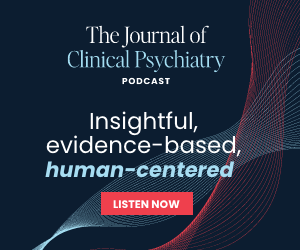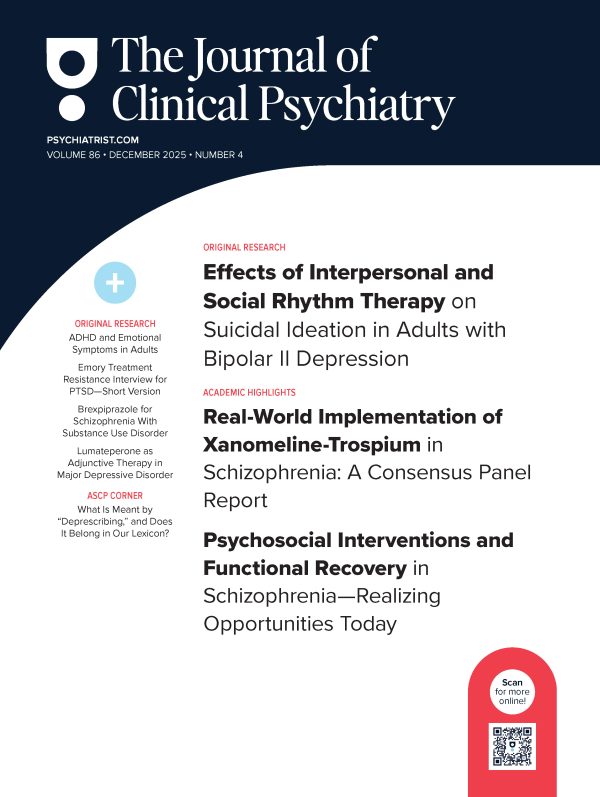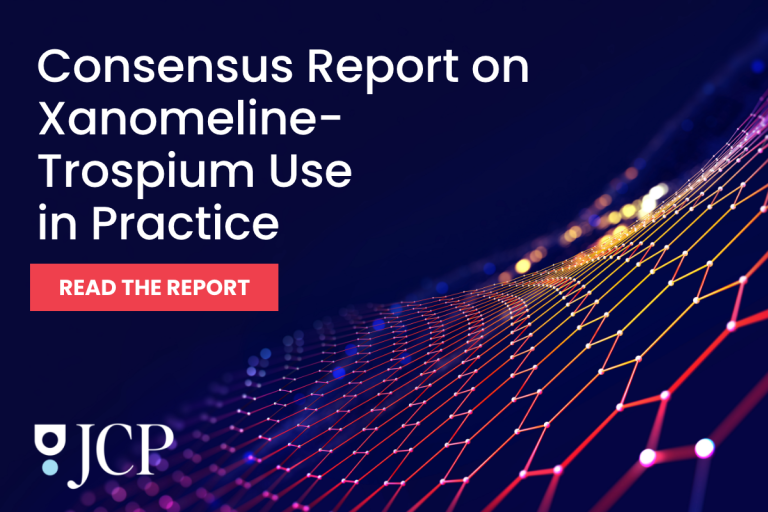ABSTRACT
Objective: To investigate scopolamine’s rapid-acting antidepressant effects using an active placebo comparator. Most prior intravenous scopolamine studies reduced depressive symptomatologies compared to saline placebo infusions within 3 days. However, the confounding effect of placebo is unknown given that only saline placebo has been used in prior studies.
Methods: In this trial, 40 patients with major depressive disorder were randomized to receive single intravenous doses of either scopolamine hydrobromide (4–6 µg/kg) or glycopyrronium bromide (4 µg/kg) between August 2019 and April 2021 in Auckland, New Zealand. Glycopyrronium was chosen as the active placebo due to its similar antimuscarinic properties to scopolamine but inability to cross the blood-brain barrier. The primary mood outcome measure was the Montgomery-Åsberg Depression Rating Scale (MADRS) administered pre-infusion and 1, 3, 7, 14, 28, and 42 days post-infusion.
Results: Per protocol, this trial was abandoned for futility at n = 40. While scopolamine reduced MADRS scores by 12.6 (± 8.7 SD) points at day 3, glycopyrronium showed similar reductions (11.2 ± 9.6 SD). Frequentist linear mixed models showed no antidepressant effects of scopolamine versus placebo (d = 0.17), and Bayesian mixed effect models showed moderate evidence in favor of the null hypothesis at day 3 (Bayes factor = 0.32). Participants remained well-blinded to drug allocation, with 50% of participants correctly guessing their allocation.
Conclusions: The observed MADRS improvement was larger than in prior studies, but no antidepressant effects were observed. This study using an active placebo confirms recent studies demonstrating the lack of antidepressant efficacy of scopolamine.
Trial Registration: Australian New Zealand Clinical Trials Registry identifier: ACTRN12619000569101
Members Only Content
This full article is available exclusively to Professional tier members. Subscribe now to unlock the HTML version and gain unlimited access to our entire library plus all PDFs. If you’re already a subscriber, please log in below to continue reading.
References (50)

- World Health Organization. Depression. https://www.who.int/news-room/fact-sheets/detail/depression. Published January 30, 2020. Accessed July 4, 2021.
- Kelly K, Posternak M, Alpert JE. Toward achieving optimal response: understanding and managing antidepressant side effects. Dialogues Clin Neurosci. 2008;10(4):409–418. PubMed CrossRef
- Lee EE, Della Selva MP, Liu A, et al. Ketamine as a novel treatment for major depressive disorder and bipolar depression: a systematic review and quantitative meta-analysis. Gen Hosp Psychiatry. 2015;37(2):178–184. PubMed CrossRef
- Fond G, Loundou A, Rabu C, et al. Ketamine administration in depressive disorders: a systematic review and meta-analysis. Psychopharmacology (Berl). 2014;231(18):3663–3676. PubMed CrossRef
- Marcantoni WS, Akoumba BS, Wassef M, et al. A systematic review and meta-analysis of the efficacy of intravenous ketamine infusion for treatment resistant depression: January 2009–January 2019. J Affect Disord. 2020;277:831–841. PubMed CrossRef
- Canady VA. FDA approves esketamine treatment for MDD, suicidal ideation. Ment Health Wkly. 2020;30(31):6–7. CrossRef
- Duman RS. Ketamine and rapid-acting antidepressants: a new era in the battle against depression and suicide. F1000 Res. 2018;7:659. CrossRef
- Furey ML, Drevets WC. Antidepressant efficacy of the antimuscarinic drug scopolamine: a randomized, placebo-controlled clinical trial. Arch Gen Psychiatry. 2006;63(10):1121–1129. PubMed CrossRef
- Drevets WC, Furey ML. Replication of scopolamine’s antidepressant efficacy in major depressive disorder: a randomized, placebo-controlled clinical trial. Biol Psychiatry. 2010;67(5):432–438. PubMed CrossRef
- Furey ML, Khanna A, Hoffman EM, et al. Scopolamine produces larger antidepressant and antianxiety effects in women than in men. Neuropsychopharmacology. 2010;35(12):2479–2488. PubMed CrossRef
- Ellis JS, Zarate CA Jr, Luckenbaugh DA, et al. Antidepressant treatment history as a predictor of response to scopolamine: clinical implications. J Affect Disord. 2014;162:39–42. PubMed CrossRef
- Park L, Furey M, Nugent AC, et al. Neurophysiological changes associated with antidepressant response to ketamine not observed in a negative trial of scopolamine in major depressive disorder. Int J Neuropsychopharmacol. 2019;22(1):10–18. PubMed CrossRef
- Mirakhur RK, Dundee JW. Glycopyrrolate: pharmacology and clinical use. Anaesthesia. 1983;38(12):1195–1204. PubMed CrossRef
- Chen JCC, Sumner RL, Krishnamurthy Naga V, et al. A randomised, double-blind, active placebo-controlled, parallel groups, dose-response study of scopolamine hydrobromide (4-6 μg/kg) in patients with major depressive disorder. Trials. 2020;21(1):157. PubMed CrossRef
- American Psychiatric Association. Diagnostic and Statistical Manual of Mental Disorders (DSM-5). American Psychiatric Publishing; 2013.
- Montgomery SA, Asberg M. A new depression scale designed to be sensitive to change. Br J Psychiatry. 1979;134(4):382–389. PubMed CrossRef
- Williams JB, Kobak KA. Development and reliability of a structured interview guide for the Montgomery Asberg Depression Rating Scale (SIGMA). Br J Psychiatry. 2008;192(1):52–58. PubMed CrossRef
- Rutherford BR, Marcus SM, Wang P, et al. A randomized, prospective pilot study of patient expectancy and antidepressant outcome. Psychol Med. 2013;43(5):975–982. PubMed CrossRef
- Rush AJ, Trivedi MH, Ibrahim HM, et al. The 16-Item Quick Inventory of Depressive Symptomatology (QIDS), clinician rating (QIDS-C), and self-report (QIDS-SR): a psychometric evaluation in patients with chronic major depression. Biol Psychiatry. 2003;54(5):573–583. PubMed CrossRef
- Martin CS, Earleywine M, Musty RE, et al. Development and validation of the Biphasic Alcohol Effects Scale. Alcohol Clin Exp Res. 1993;17(1):140–146. PubMed CrossRef
- Judd LL, Hubbard RB, Huey LY, et al. Lithium carbonate and ethanol induced “highs” in normal subjects. Arch Gen Psychiatry. 1977;34(4):463–467. PubMed CrossRef
- Bremner JD, Krystal JH, Putnam FW, et al. Measurement of dissociative states with the Clinician-Administered Dissociative States Scale (CADSS). J Trauma Stress. 1998;11(1):125–136. PubMed CrossRef
- Dittrich A. The standardized psychometric assessment of altered states of consciousness (ASCs) in humans. Pharmacopsychiatry. 1998;31(suppl 2):80–84. PubMed CrossRef
- Rief W, Barsky AJ, Glombiewski JA, et al. Assessing general side effects in clinical trials: reference data from the general population. Pharmacoepidemiol Drug Saf. 2011;20(4):405–415. PubMed CrossRef
- Bowdle TA, Radant AD, Cowley DS, et al. Psychedelic effects of ketamine in healthy volunteers: relationship to steady-state plasma concentrations. Anesthesiology. 1998;88(1):82–88. PubMed CrossRef
- Faul F, Erdfelder E, Lang AG, et al. G*Power 3: a flexible statistical power analysis program for the social, behavioral, and biomedical sciences. Behav Res Methods. 2007;39(2):175–191. PubMed CrossRef
- Chen YHJ, DeMets DL, Lan KKG. Increasing the sample size when the unblinded interim result is promising. Stat Med. 2004;23(7):1023–1038. PubMed CrossRef
- Chen YH, Li C, Lan KK. Sample size adjustment based on promising interim results and its application in confirmatory clinical trials. Clin Trials. 2015;12(6):584–595. PubMed CrossRef
- R Core Team. A Language and Environment for Statistical Computing. R Foundation for Statistical Computing. https://www.r-project.org/. 2020. Accessed June 22, 2021.
- Zuurman L, Roy C, Schoemaker RC, et al. Effect of intrapulmonary tetrahydrocannabinol administration in humans. J Psychopharmacol. 2008;22(7):707–716. PubMed CrossRef
- Studerus E, Gamma A, Vollenweider FX. Psychometric evaluation of the altered states of consciousness rating scale (OAV). PLoS One. 2010;5(8):e12412. PubMed CrossRef
- Harden RN, Saracoglu M, Connolly S, et al. “Managing” the placebo effect: the single-blind placebo lead-in response in two pain models. Pain Med. 2016;17(12):2305–2310. PubMed CrossRef
- Faries DE, Heiligenstein JH, Tollefson GD, et al. The double-blind variable placebo lead-in period: results from two antidepressant clinical trials. J Clin Psychopharmacol. 2001;21(6):561–568. PubMed CrossRef
- Brown WA, Johnson MF, Chen MG. Clinical features of depressed patients who do and do not improve with placebo. Psychiatry Res. 1992;41(3):203–214. PubMed CrossRef
- Fairchild CJ, Rush AJ, Vasavada N, et al. Which depressions respond to placebo? Psychiatry Res. 1986;18(3):217–226. PubMed CrossRef
- Sullivan MD, Katon WJ, Russo JE, et al. Patient beliefs predict response to paroxetine among primary care patients with dysthymia and minor depression. J Am Board Fam Pract. 2003;16(1):22–31. PubMed CrossRef
- Wilkinson ST, Farmer C, Ballard ED, et al. Impact of midazolam vs saline on effect size estimates in controlled trials of ketamine as a rapid-acting antidepressant. Neuropsychopharmacology. 2019;44(7):1233–1238. PubMed CrossRef
- Yaroslavsky I, Rottenberg J, Bylsma LM, et al. Parasympathetic nervous system activity predicts mood repair use and its effectiveness among adolescents with and without histories of major depression. J Abnorm Psychol. 2016;125(3):323–336. PubMed CrossRef
- De Ferrari GM, Mantica M, Vanoli E, et al. Scopolamine increases vagal tone and vagal reflexes in patients after myocardial infarction. J Am Coll Cardiol. 1993;22(5):1327–1334. PubMed CrossRef
- La Rovere MT, Mortara A, Pantaleo P, et al. Scopolamine improves autonomic balance in advanced congestive heart failure. Circulation. 1994;90(2):838–843. PubMed CrossRef
- Vybiral T, Bryg RJ, Maddens ME, et al. Effects of transdermal scopolamine on heart rate variability in normal subjects. Am J Cardiol. 1990;65(9):604–608. PubMed CrossRef
- Haddad EB, Patel H, Keeling JE, et al. Pharmacological characterization of the muscarinic receptor antagonist, glycopyrrolate, in human and guinea-pig airways. Br J Pharmacol. 1999;127(2):413–420. PubMed CrossRef
- Bolden C, Cusack B, Richelson E. Antagonism by antimuscarinic and neuroleptic compounds at the five cloned human muscarinic cholinergic receptors expressed in Chinese hamster ovary cells. J Pharmacol Exp Ther. 1992;260(2):576–580. PubMed
- Drevets WC, Zarate CA Jr, Furey ML. Antidepressant effects of the muscarinic cholinergic receptor antagonist scopolamine: a review. Biol Psychiatry. 2013;73(12):1156–1163. PubMed CrossRef
- Duman RS. Neurobiology of stress, depression, and rapid acting antidepressants: remodeling synaptic connections. Depress Anxiety. 2014;31(4):291–296. PubMed CrossRef
- Ghosal S, Bang E, Yue W, et al. Activity-dependent brain-derived neurotrophic factor release is required for the rapid antidepressant actions of scopolamine. Biol Psychiatry. 2018;83(1):29–37. PubMed CrossRef
- Dwyer JB, Landeros-Weisenberger A, Johnson JA, et al. Efficacy of intravenous ketamine in adolescent treatment-resistant depression: a randomized midazolam-controlled trial. Am J Psychiatry. 2021;178(4):352–362. PubMed CrossRef
- Shiroma PR, Thuras P, Wels J, et al. A randomized, double-blind, active placebo-controlled study of efficacy, safety, and durability of repeated vs single subanesthetic ketamine for treatment-resistant depression. Transl Psychiatry. 2020;10(1):206. PubMed CrossRef
- McMillan R, Sumner R, Forsyth A, et al. Simultaneous EEG/fMRI recorded during ketamine infusion in patients with major depressive disorder. Prog Neuropsychopharmacol Biol Psychiatry. 2020;99:109838. PubMed CrossRef
- Muthukumaraswamy SD, Forsyth A, Lumley T. Blinding and expectancy confounds in psychedelic randomized controlled trials. Expert Rev Clin Pharmacol. 2021;14(9):1133–1152. PubMed CrossRef





